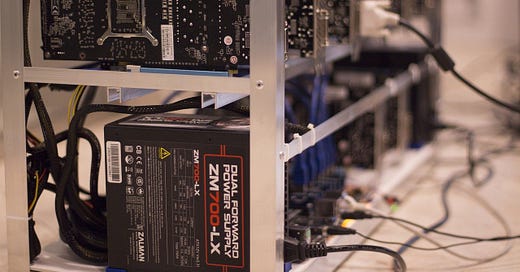What connects ETHC and Litecoin?
In today’s edition, PoW tokens could be nearing the finish line, and Celsius trickery.
Good morning! Welcome to The Daily Moon. It’s a brand new week. The first SEC-approved crypto trading platform is ready for launch. INX Digital has created a regulator-friendly product, INX One. A sanskari exchange. Finally?
The markets were flat. Bitcoin traded at ~$19,100 while Ethereum was at $1,330 levels. Nasdaq fell on recession fears. Back home, Sensex and Nifty extended their losses due to a selloff globally.
Image by Лечение Наркомании from Pixabay
Is it game over for PoW tokens?
Chandler Guo was among the few Ethereum lovers who switched sides in the end. Guo was a miner, after all. His business would have gone bust with the Merge. He initiated a hard fork to launch a new token, Ethereum Proof of Work.
Just for context, ETHW was at an all-time high of $128.25 on August 8. Just over a month later, this forked token ETHW dropped to $6.5 levels.
If someone decided to hold ETHW, the loss would have been deep. There doesn’t seem to be any chance of recovery. The question here: is this just restricted to ETHW, or is there a larger malaise?
The business model behind PoW seems to have run its course. And if ETHW is an indication, there are others that may follow its course. Before we start listing names, why are we making this argument?
What’s the business model for these PoW tokens?
Miners spend computing power to solve complex algorithmic problems. The time and energy spent earn them tokens.
The miners sell these tokens on the market.
The token price rises on demand.
Let’s go back to ETHW for a second. Going from ~$128 to ~$6 is a massive drop. It indicates that something in this three-step process broke. What broke? Thumb rule of running a good business: costs< revenue. This thumb rule is still true but the gap between costs and revenue is closing. And fast.
A few reasons for it:
Increasing power costs.
The selling price of tokens is dropping dramatically.
And this is when we enter this vicious cycle, which caused the price crash.
This holds true for not just ETHW. But for everyone on the PoW list, which includes Monero, Litecoin, and Ethereum Classic. Bitcoin is a PoW token too. But we’ll leave it out of the argument for a bit.
Let talk costs
Electricity and hardware make PoW tokens unprofitable. Take Monero, for instance. After investing between $5,000-20,000 to buy hardware, its average daily mining revenue is $1.05. But electricity takes up $1.08 so miners barely make any money.
It’s not a surprise that Monero volumes dropped 70% to $74 million from a year ago.
Litecoin mining is loss-making too. For ~$7 in daily revenue, you pay ~$8 in energy costs. This is every day. But its believers hope that it will shift to PoS, though developers haven’t promised anything yet.
The OG Ethereum hard fork, Ethereum Classic, is no better. There is a daily loss of $1.5.
Why BTC won’t remain an outlier
Bitcoin leads the charts among PoW tokens. But it is not very profitable to mine Bitcoin at current costs. After deducting the pool fee and power costs, there is a daily loss of $1.33 on Bitcoin mining. And rewards have halved from 25 BTC for a single block addition in 2012 to 6.25 BTC at present.
There is no end to the woes. Energy prices may increase by 50% in 2022. Net-net, you spend several dollars to earn a dime. This is even as Bitcoin mining generates more carbon dioxide than Denmark.
After Ethereum’s PoS shift, only two PoW tokens remain in the top 10 crypto list. Bitcoin and Dogecoin. Let’s not even get to Dogecoin because it’s barely worth 10 cents.
For the rest of the PoW tokens, the costs are closing in. Even if they get past this, the White House is watching.
Celsius Isn’t Paying Up
Celsius will do anything but repay. The bankrupt crypto lender plans to convert its debt into crypto IOU tokens. Good luck trying to recover your funds through it.
What’s the deal?
In exchange for your funds stuck with Celsius, the company will offer IOU tokens. You can either sell them off (not clear how), trade them in the market (who’s buying?), or hold them in hopes of a revival (when is that?).
So back to square one?
Kind of. If tokens are issued, the crypto lender won’t have to clear their debt. Celsius claims to have received “positive feedback” on the IOUs from the creditors' committee. But there’s no official word from the other side.
And that’s it for today. If this email was forwarded to you, please consider subscribing. It’s free. We’ll never show you an ad or charge you for this. We swear.
Who are we? There is a lot happening in our world. Everything has layers, and each layer has to be carefully peeled so you, the reader, know how the world of money is changing every day. That’s our promise. Help you unpeel the onions, which are the public markets in the US, India, and crypto, so that you know just a little more.






